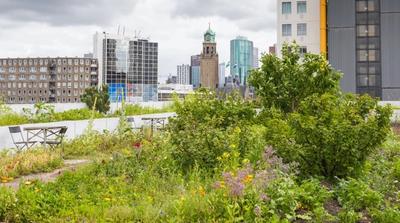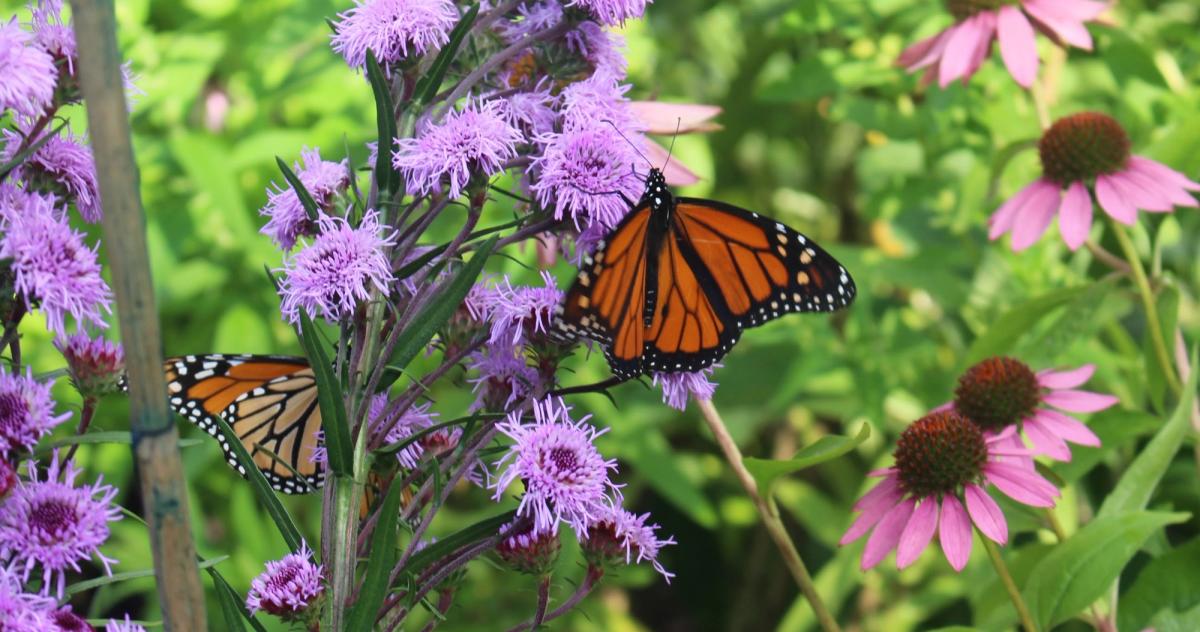Native Plant Landscaping for Sustainability and Habitat Restoration in Corporate Campuses

Sustainable native plant landscapes on commercial and corporate campuses support sensitive ecosystems and offer both short-term and long-term benefits to workers and organizations.
Sustainability is a trending corporate strategy of many organizations that are trying hard to stay relevant in the current business landscape. Companies are pushing hard to ‘go green’ and prioritize the environment when making their business decisions. Corporate marketing campaigns and awareness programs have dominating themes of reducing carbon footprint and making a difference to the planet.
A direct expression of the brands’ belief systems and values is the choice of their commercial landscapes. Using landscapes that merely look green (read: lawns) with no functional benefits fails to represent the brand ethos and can end up damaging the company’s reputation. This is why we notice more companies paying close attention to their landscaping choices, ensuring they are sustainable and eco-friendly.
What better way to create beautiful and sustainable commercial landscapes than with native plants? Native vegetation provides ample opportunities to address the escalating environmental concerns and transform large office spaces into ecological-rich zones. Companies are slowly realizing that it is possible to create picture-perfect corporate campuses with native plants that perfectly align with their aesthetic and environmental goals.
Here are instances of two global tech giants which are transforming commercial spaces into regional landscapes that counter habitat fragmentation and offer invaluable benefits to humans:

Amazon HQ2 Campus, Arlington, Virginia: Last year, the e-commerce giant, Amazon took a pledge to surround its corporate buildings with sustainable greenery using native vegetation. The company plans to address a variety of environmental issues like reducing carbon footprint, water consumption and maintaining efforts using plants and trees native to Virginia. The end goal is to create a healthy and natural environment for its employees and wildlife communities by covering the campus spaces with native plants to support pollinators and restore insect and bird habitats.
Google Campus, Mountainview, California: ‘Bring natives back’ seems to be the central theme of Google corporate landscaping in its Mountainview campus. The company started the Google Ecology Program to create pollinator corridors and expand wildlife habitats on its huge campus . The program involved selecting a wide range of native plants, trees and wildflowers to attract pollinators, birds and a wide variety of beneficial creatures which lost their habitats during the development of the office space. The project also plans to address climate change issues by creating resilient and sustainable landscapes across Silicon Valley.
Even companies like Facebook, Apple, Microsoft etc. are using native plant landscaping as an opportunity to create biodiverse sustainable workplaces as a starting step to reflect their commitment towards the planet.

Benefits of Using Native Plants in Commercial/ Corporate Landscaping
Designing commercial landscapes with native plants offers wonderful benefits to human and non-human stakeholders which share the campus space. Here are some of them:
1.Create Beautiful Landscapes with Minimal Resources and Money
Companies invest billions of dollars each year to maintain the beauty of hard-to-grow lawns and exotic plants. This investment can be brought down significantly by swapping at least a few patches of lawns with native plants and trees. Natives can naturally adapt themselves to the water, soil and weather conditions of the local region. With some initial support, they can stay healthy with less watering and fertilizers. They are non-fussy, disease resistant and easy to maintain, which translates to annual dollar savings for the companies. In return, natives reward us with gorgeous colors of foliage and flowers which transform a concrete jungle into a livable, breathable space.

2.Support Environmental Restoration Goals
Environmental restoration in a commercial or corporate campus cannot happen without native plants which revive the damaged natural systems. Native plants mimic local wilderness and create new homes to re-establish a whole new population of flora and fauna. By slowly replacing turfs with natural zones, companies, to a certain extent can rebuild the former landscapes which took a heavy toll due to human activities. Also, by minimizing water usage and maintenance efforts, native plants help with natural resource conversation, which is an important aspect of an organization’s sustainable journey.
3.Create Healthy and Happy Workplaces
Studies show that people who regularly spend time in natural environments enjoy a host of physical and psychological benefits. Native plant landscapes recreate a forest-like ambience for workers which can significantly lower their stress levels, improve job satisfaction and overall productivity. Workers share their positive experiences on social media and other platforms which greatly contributes to the overall reputation and employer score of the company.
To summarize the topic, using native plants in commercial landscapes not only benefits the environment but also the companies which use them. Companies find it easy to support their commitment towards sustainability and stay true to their corporate strategy. They can act as environmental leaders and gain immense trust among their stakeholders and employees. Isn’t this a perfect example of ‘small change = big impact’?
My Home Park has a team of highly experienced native plant experts who can support your sustainable and environmental-friendly landscaping initiatives in office and commercial campuses. Feel free to contact us now to get started!
References:


Share this article


